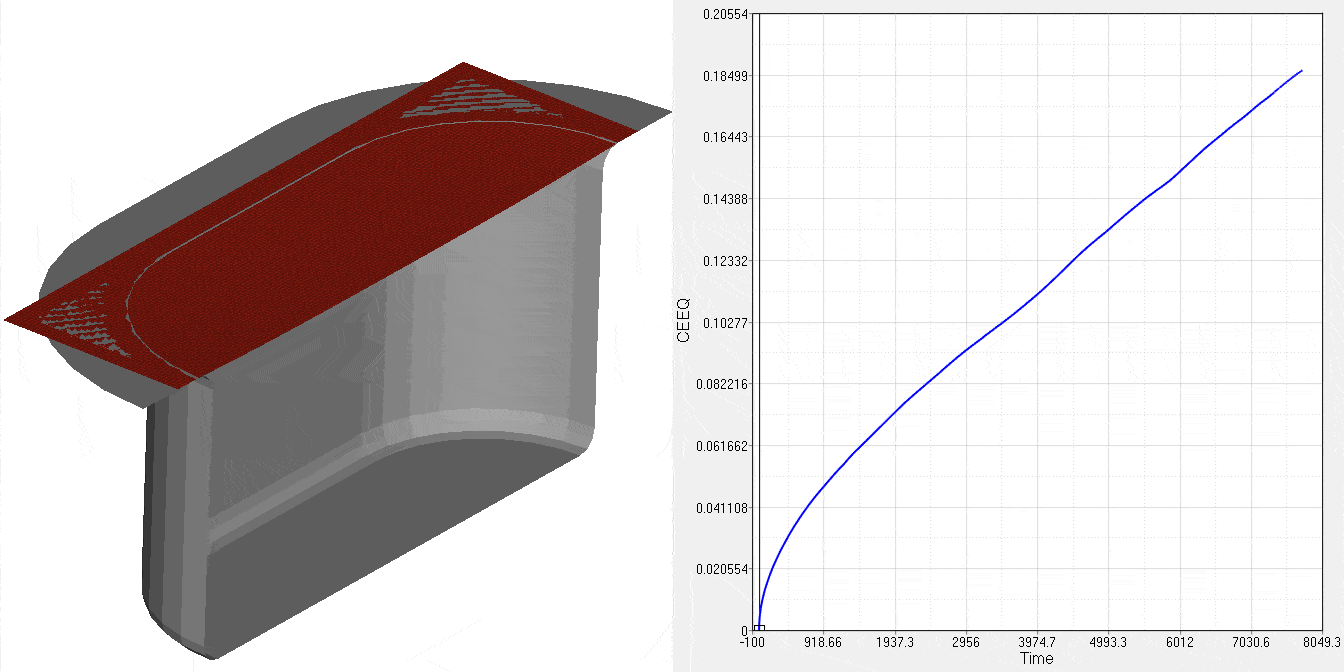Process Simulation
Now a days, the topology of products is getting complicated. It requires sophisticated manufacturing techniques. The sophistication needs fine tuning of manufacturing parameters efficiently. The manufacturing process simulation helps designers to design and optimize manufacturing parameters virtually. It reduces wastages, ensure products are being manufactured exactly in the same manner as they have been designed.
Sheet Metal Forming:

Consumer appliances, aeronautics, automotive and packing industries extensively uses sheet metal forming simulation in design of their components. Press forces, tool geometry constitutes basic parameters of forming simulation. Out of forming simulation, a process engineer gets an insight about Flow Line Diagram (FLD), thinning and thickening of sheet metal parts during forming and wrinkle formation regions. The process engineer based on the results from simulation can work on optimizing process flow especially in case of multi- step forming.
The residual stresses and strains from the manufacturing processes are of high importance for the designer considering the durability perspectives. Thinning and thickening regions of an important BIW component plays critical role in the crash simulations.
Plastic Moldflow Simulation:
Many parts are getting converted from metal to plastic in order to reduce the weight. This leads to a complicated plastic part topology and designer needs to ensure proper manufacturability of the parts. Moldfolw simulations plays an important role to simulate injection molding process and assess/ optimize riser & gate systems, uniform flow distribution of molten plastics in cavity.
Faster assessment of digital design in terms of warping and other manufacturing defects with virtual injection trials enables designers to optimize design at an early stage. This simulation provides insight into suitable wall thickness, weld lines, inlet cooling and cavity degassing placement etc.
In case of glass fibre plastics, orientation of the fibre is an outcome of moldflow simulations. This fibre orientation is mapped on the structural simulation models to simulate orthotropic behaviour.
Plant Simulation:
Today’s manufacturing units need to be highly efficient in terms of workflow, minimum inventory, and less maintenance. Complexity in manufacturing systems stems from factors such as multiple subassemblies, numerous manufacturing steps, complex equipment which invariantly leads to higher preventive maintenance and downtime. This necessitates discrete simulation models to address complex manufacturing systems. Robotic simulations in BIW assemblies provides complete virtual overview of a manufacturing unit much in advance and benefits plant designers to deliver an optimized plant layout.
Paint Process Simulation
Circumventing physical prototypes yet ensuring quality and durability against corrosion emphasis the need for paint simulation. Electrodeposition painting, dipping process and spraying painting with electrostatic coating are some process that that can be simulated. For instance, non uniform thickness results from certain geometrical issues like sink at edges, door grip etc for typical spray-painting process.
Due to the continuous increase of production volume at each paint shop, the time for the BIW to pass through the e-coat process is getting shorter and shorter. The prediction of gas bubbles and liquid carry over during dip in/out process is very difficult to predict in actual testing. Use of same paint shop line for multiple vehicle programme. All of these challenges can be overcome by Paint Plant Simulation methods. The simulation helps plant designers in the following areas.
- Dip in Process Simulation
- Dip Out Process Simulation
- Oven Baking